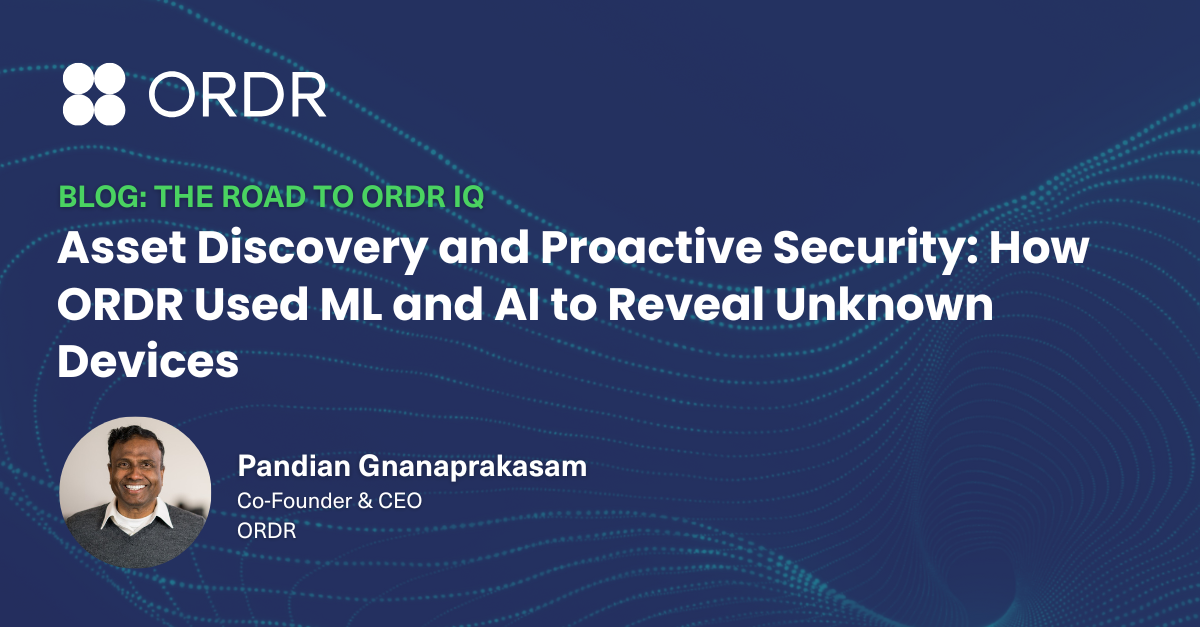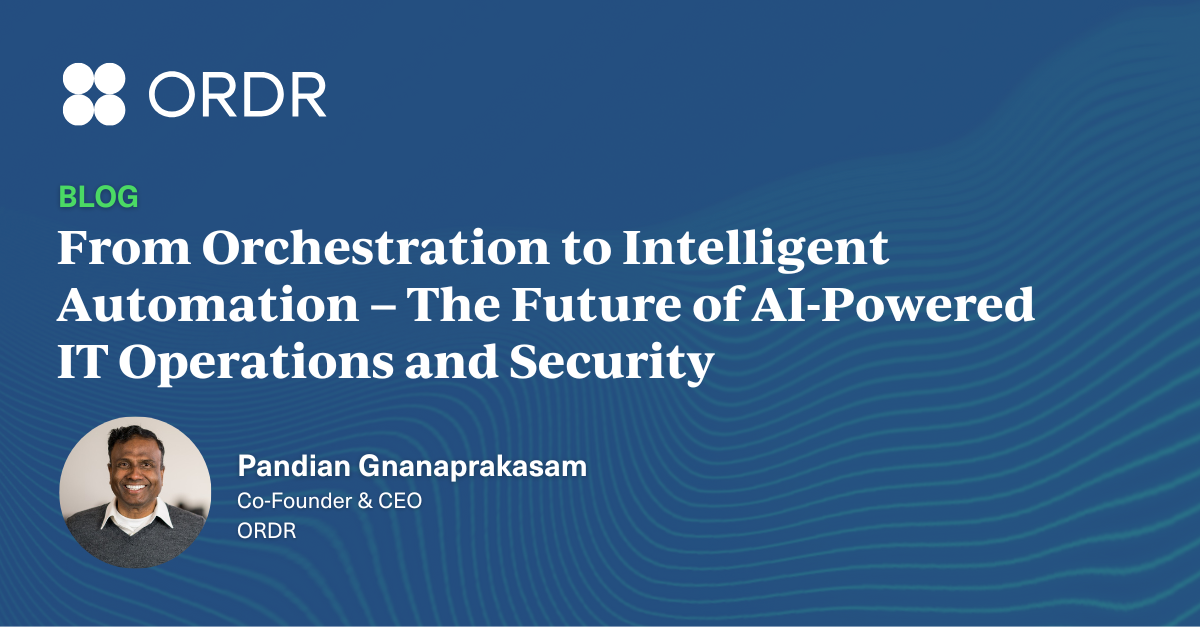I just joined Ordr as Chief Healthcare Officer and, as is often the case in life, there’s a story, personal and professional, behind my new adventure here.
A little more than seven years ago, while I was CTO at Sutter Health, a friend from my days as CIO at Seattle Children’s Hospital called and told me about a technology he really wanted to get my opinion on. It was an innovative new product aimed at keeping connected devices secure—a growing problem for healthcare environments. Since I was just a few hours from Silicon Valley, I drove out to find out more.
That’s when I met Gnanaprakasam Pandian, one of Ordr’s co-founders. Pandian proceeded to show me v1 of Ordr and I was floored. In more than 20 years in healthcare IT and security, I had never, ever, been able to get complete visibility on everything that was on any of the networks I managed. And from conversations with my colleagues and peers I knew I was not alone; nobody could.
Sure, I could see all my PCs, printers, routers, switches and other traditional IT and back-office gear; I could even manage them fairly efficiently with the right set of tools, but my vulnerability scanners kept reminding me that there were things connected to my network that were just out of view. Yes, I might have a MAC or IP address, but no clear understanding of what the associated device was, where it was, or how it was behaving. That’s the kind of stuff that keeps a CIO or CISO up at night.
My network managers had told me not to worry about it. They would try to assuage my fears by telling me those unknown configuration items were probably just biomedical devices, not real IT equipment. Yes, they were operating on the network, but they were someone else’s problem. Their advice was meant to reassure me, but I couldn’t shake the feeling of dread.
Ordr Visibility and Security Capabilities
I described my experience with Pandian, and he showed me that, with the Ordr platform, he could tell me exactly what devices all those MAC and IP addresses were assigned to. Not only that, but Ordr could also tell me if any of those devices had associated ECRI notices, vulnerabilities, recalls, and other insights invaluable to understanding a hospital’s security posture. The visibility alone would have been enough to give me the confidence to get a full night’s sleep, but the depth and device intelligence Ordr provided was invaluable to a CISO.
Then Pandian showed me how Ordr could learn and establish a baseline for all these devices– establishing what is “normal behavior”, and then automatically generating VLAN, ACL, and Firewall policies for network and security engineers to review and execute. This functionality delivered “Zero Trust policies” — enabling only the normal communications required for its function–and was thanks to the machine learning (ML) artificial intelligence (AI) that Ordr’s other founder, Sheausong Yang, brought to the platform. And because it is ML driven, Ordr has been learning about device behavior for a long time and has a precise understanding of what constitutes abnormal activity—and what to do about it.
As impressed as I was at the demonstration, it was still a demonstration. And while I am not from Missouri, I am fond of the state’s motto: “Show Me”. So, I asked Pandian if he would be willing to bring Ordr to my organization’s operational environment. I wanted to see how the platform would perform with my stuff, and, oh boy, did it ever perform. I was amazed at the level of device intelligence I was getting out of Ordr, and I wasn’t the only one. I had my security team with me, and their faces lit up.
Seven Years Later
That was seven years ago. Today, with 61 million individual device profiles (with 1000 attributes each) now populating the Ordr Data Lake, it is now the leading asset visibility and security platform used by healthcare organizations everywhere.
Because of that experience, Sutter engaged Ordr for a trial and we began putting the platform through its paces and working with the company’s engineers. Alas, I left Sutter to take on the CTO role at Imprivata, and did not get through the PoV process before I left. Pandian and I had discussed the possibility of joining Ordr then, but the timing wasn’t quite right. I did join the company’s advisory board, however. As it turns out, that was the best scenario for both parties.
While I had extensive experience as a healthcare CIO and CTO, Ordr is much more than just a healthcare security platform and I don’t think I would have been able to do what the company needed at that point in its growth. In fact, I remember one of my first meetings “on the vendor side” listening to people talk about TAM, SAM, and SOM. I made a mental note thinking, “I’d better meet these people. They seem important!”
Today, I think I’m much better prepared to work with my friends and colleagues in the healthcare field and to use those conversations to help Ordr continue to evolve its market leading device security platform. That’s why I decided to join the Ordr team now.
I am eager and excited for this next chapter to unfold, and I hope that it involves you.

Interested in
Learning More?
Subscribe today to stay informed and get
regular updates from ORDR Cloud




